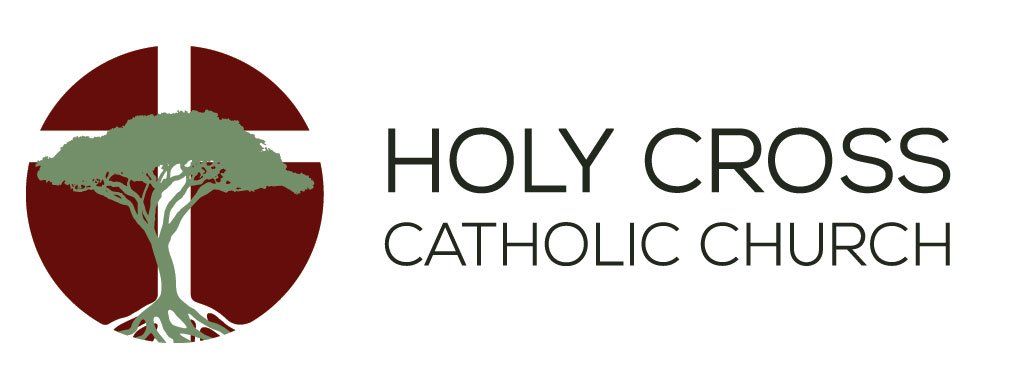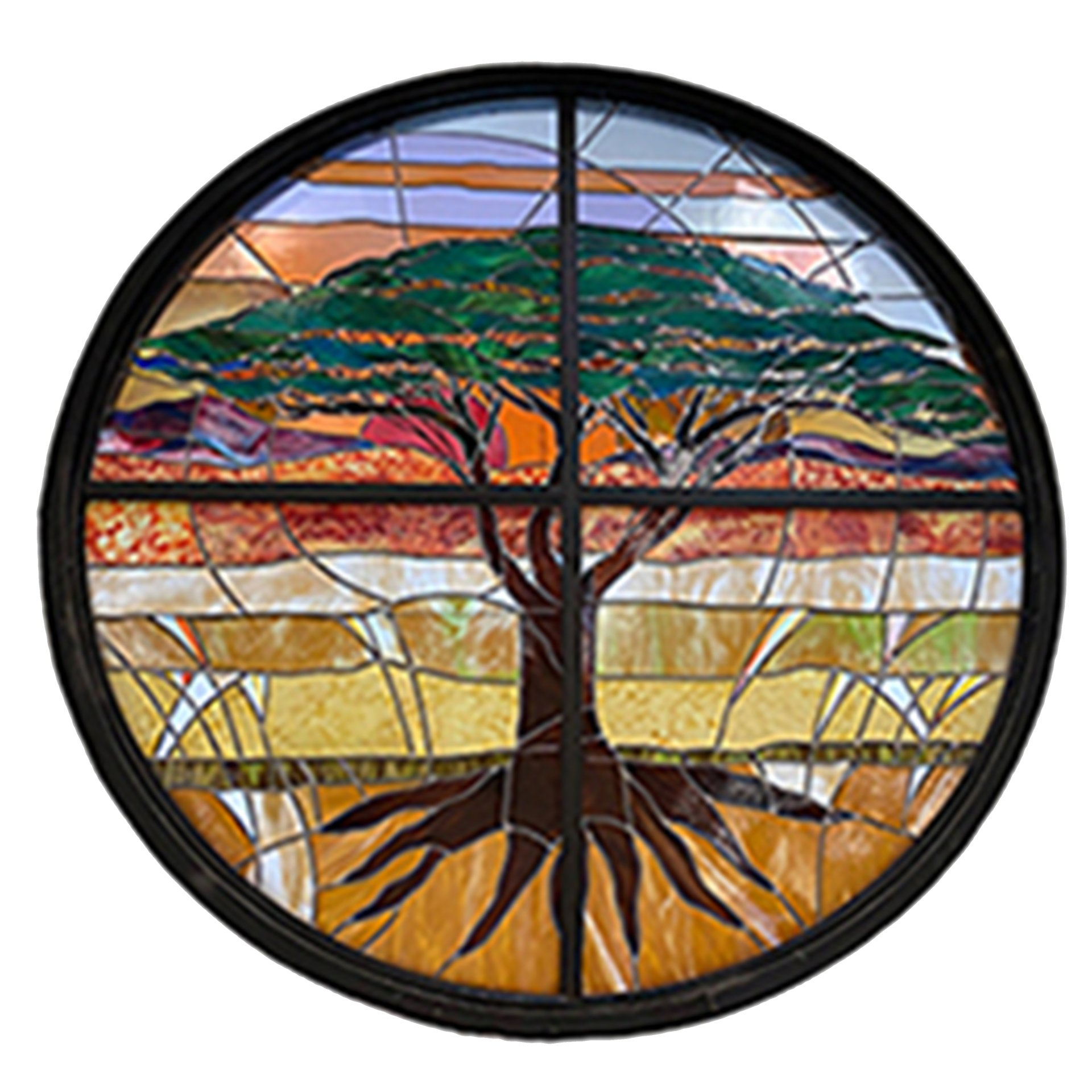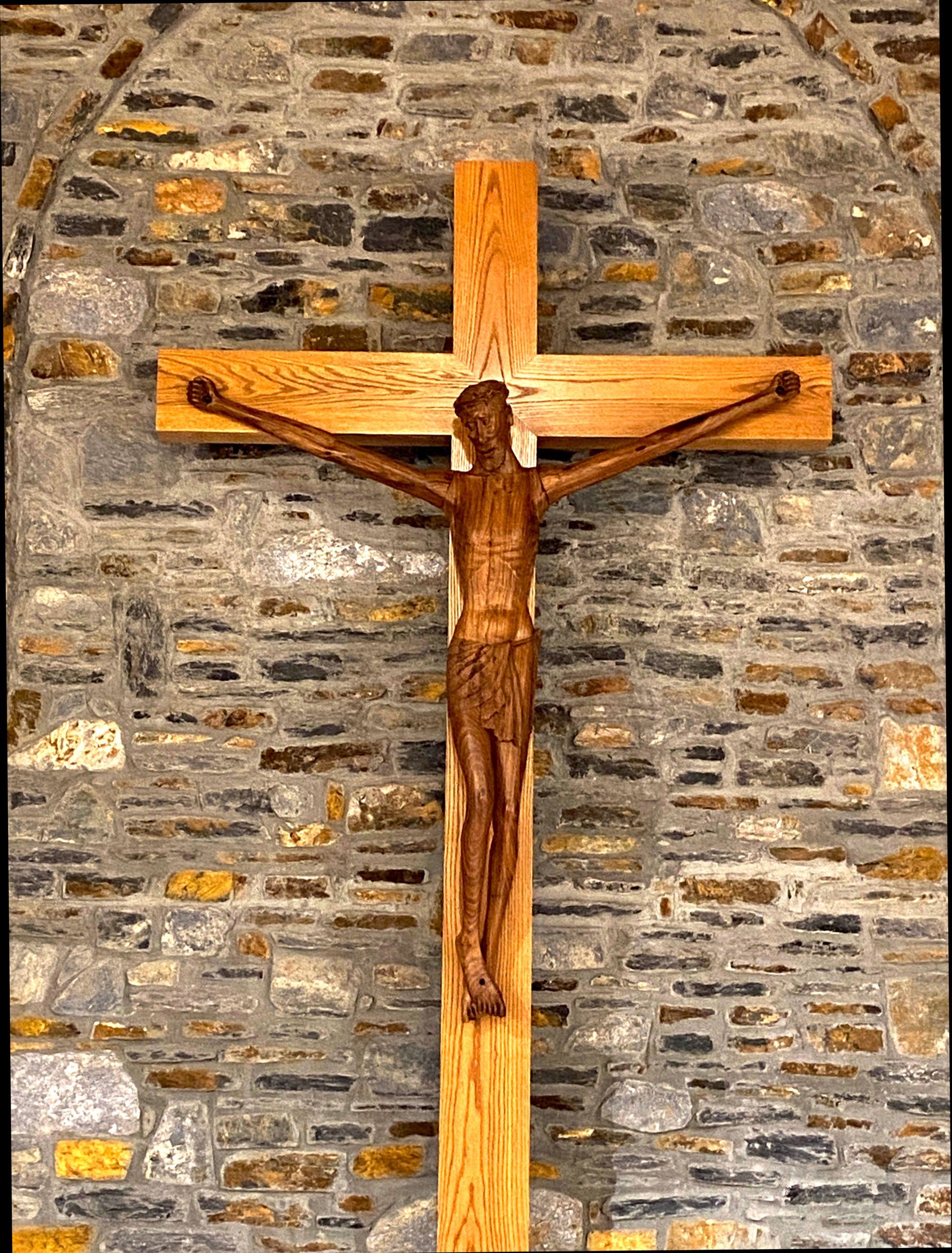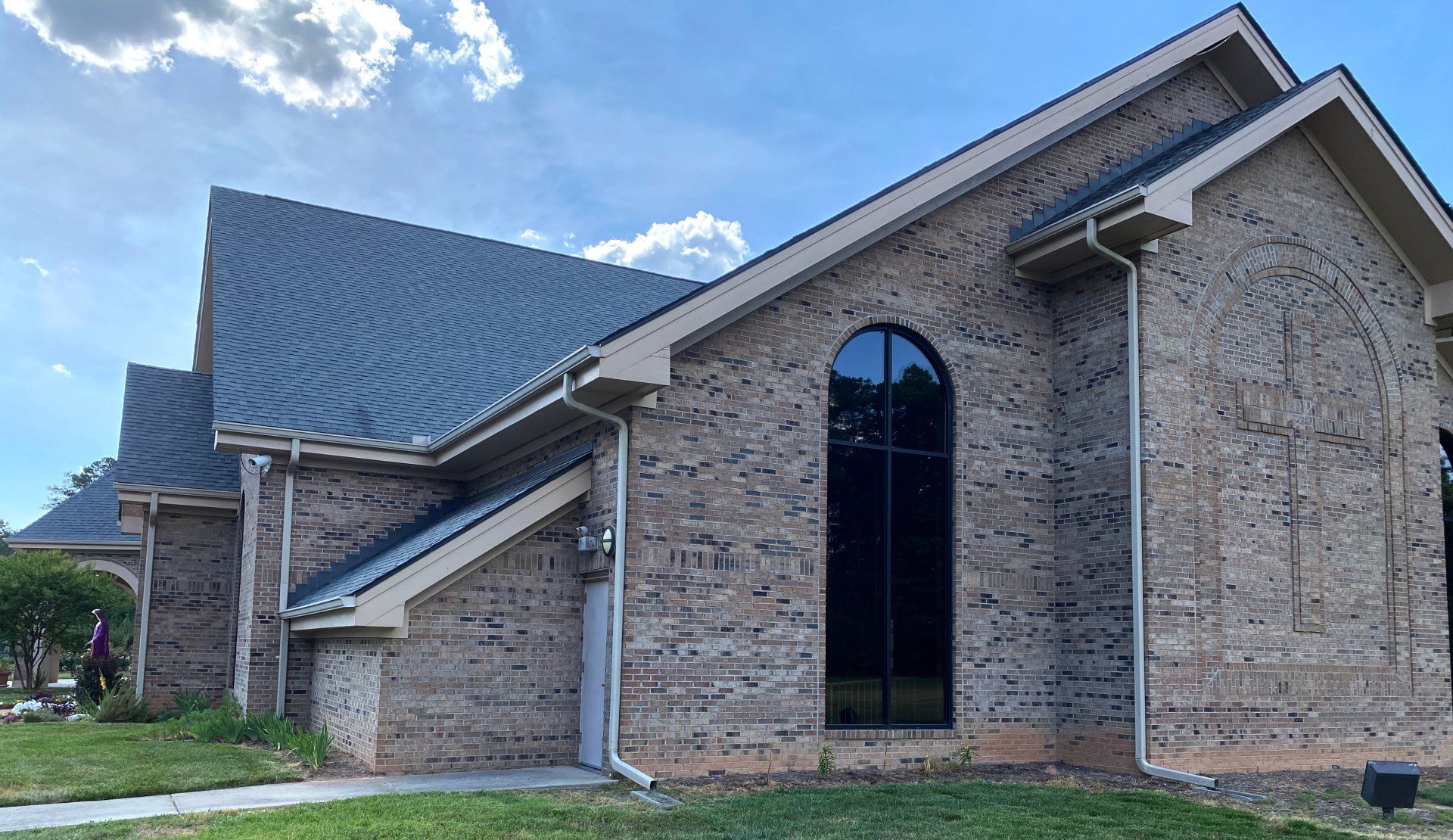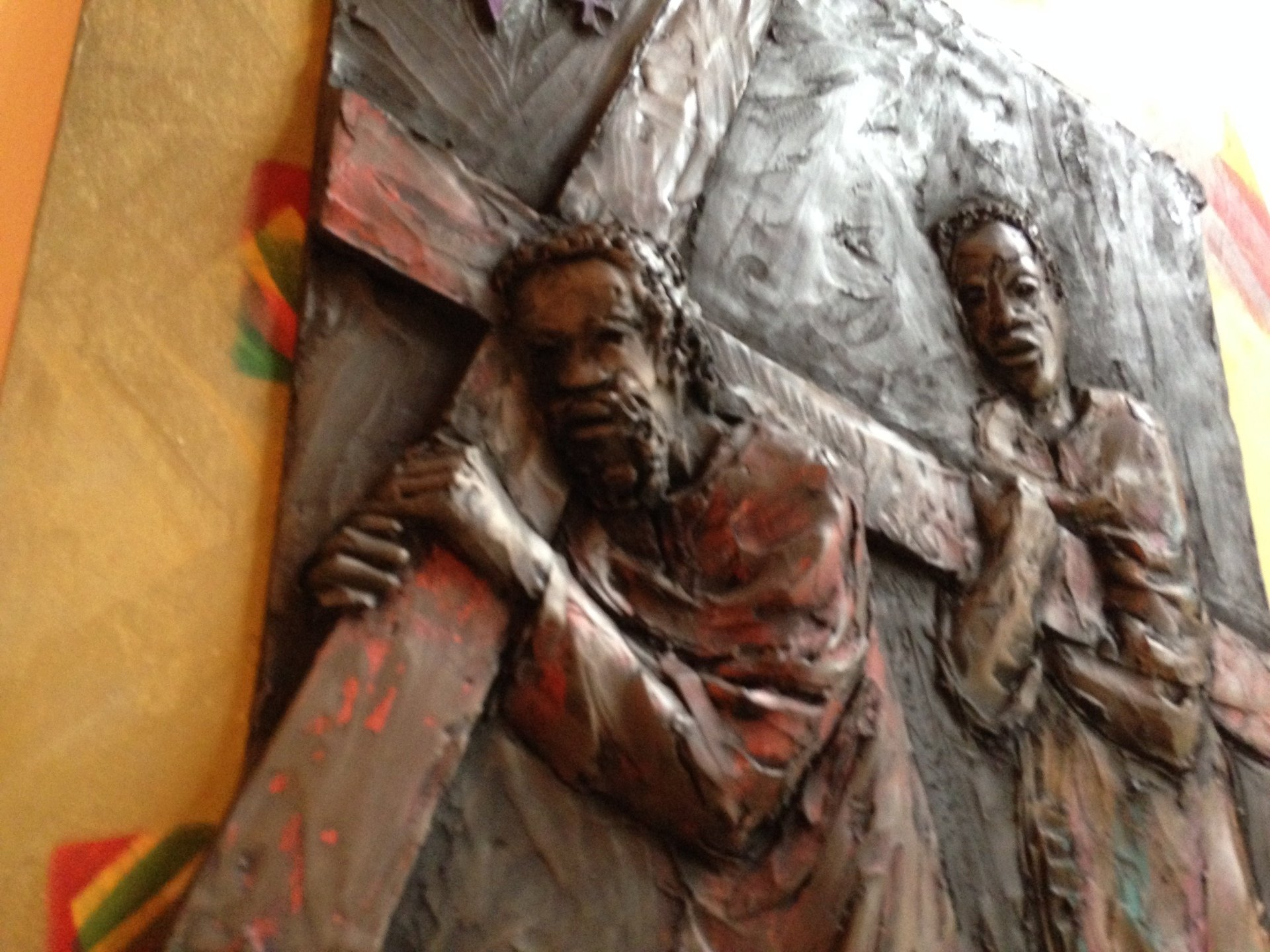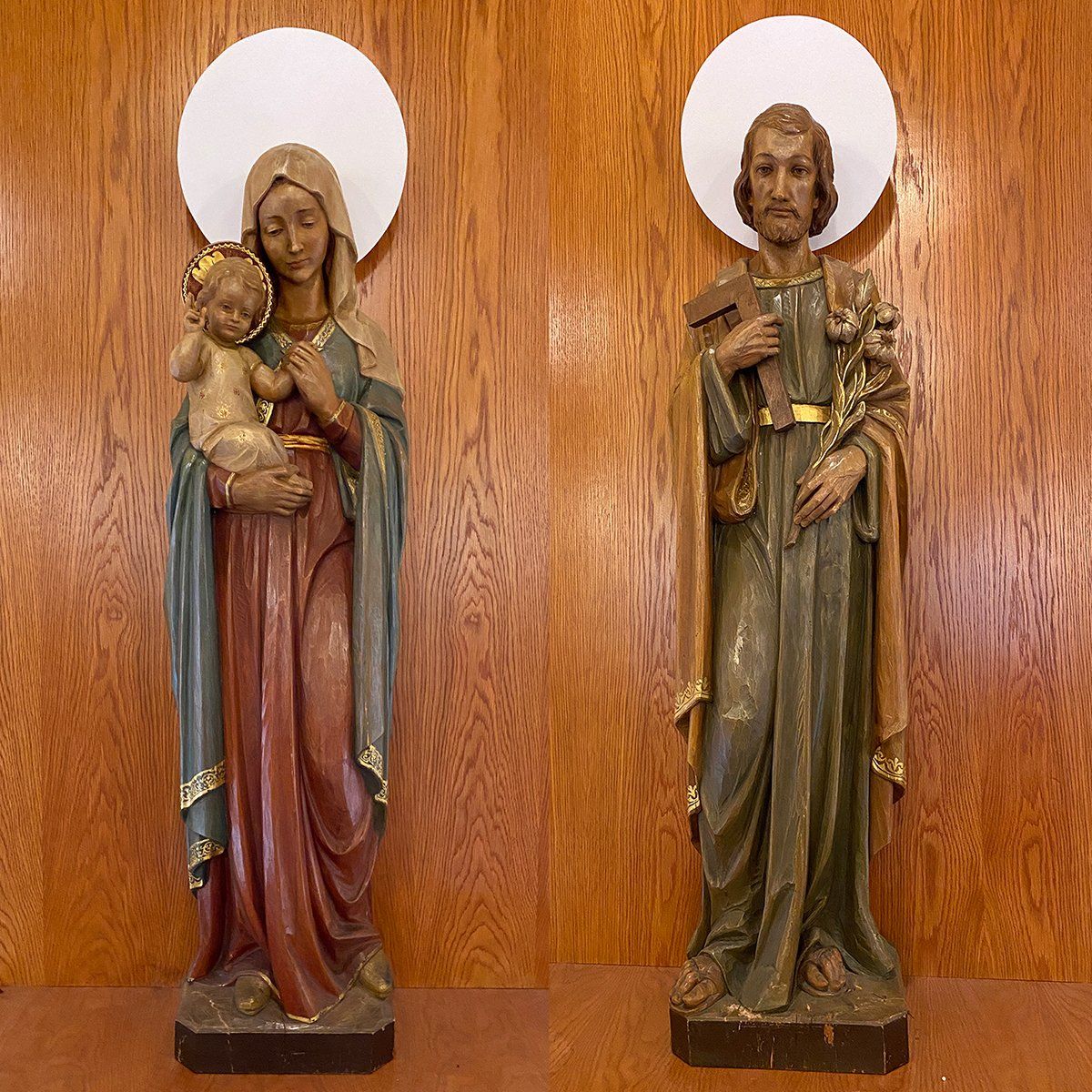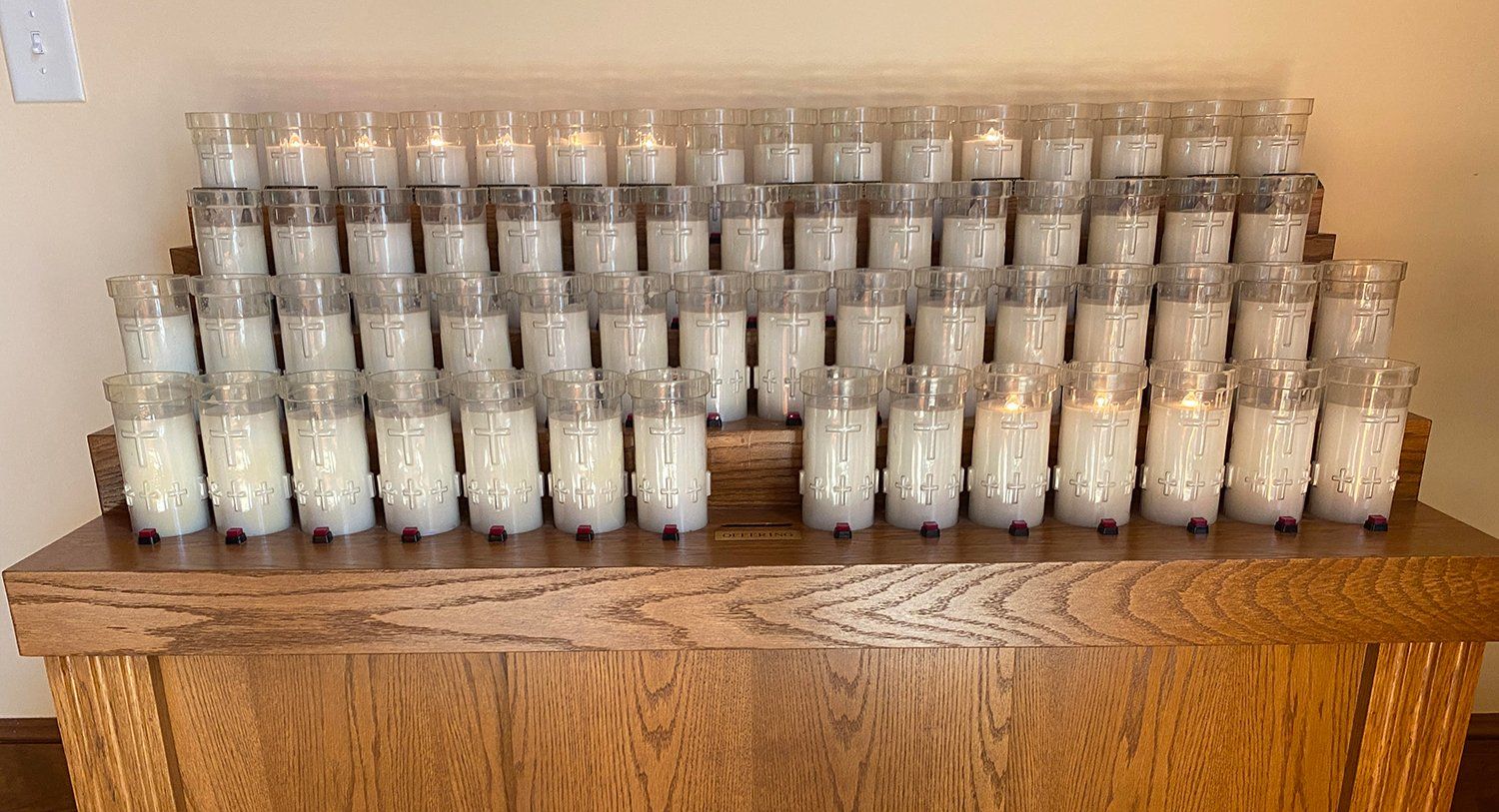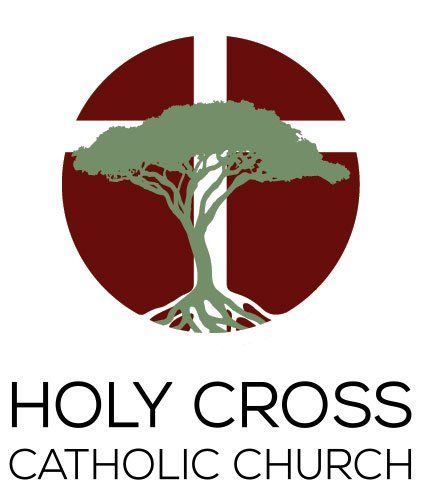Votive candles are a common sight in most Catholic churches. While not sacred art, the votive candle stand is a sacred space. Lighting a candle for someone is a way to both extend our prayers and show solidarity with the person for whom we are praying. The faithful also light candles as a sign of gratitude to God for answered prayers.
At Holy Cross, we have flameless (electronic) candles in a devotion stand with a kneeler to the right of the altar. These electric candles are safer and easier to maintain than wax candles.
To light a small votive candle, simply press the white button in front of it. The candle will remain lit for about 15 minutes. You are welcome to use the kneeler adjacent to the candle stand, or to kneel in a near-by pew as you pray for your intention. A small donation, to help with maintenance costs, may be placed in the donation slot on the stand.
The row of tall perpetual candles in the back row of the stand remain lit for one year from the date on which you make a donation and start your prayer. A $200 annual tax-deductible donation is requested for each perpetual candle being lit, which covers the service cost for programming the perpetual candles and related maintenance expenses for the candle station. Donations exceeding maintenance costs are applied to the parish's College Scholarship Fund. Contact the parish's finance administrator
to schedule your lighting of a perpetual candle.
